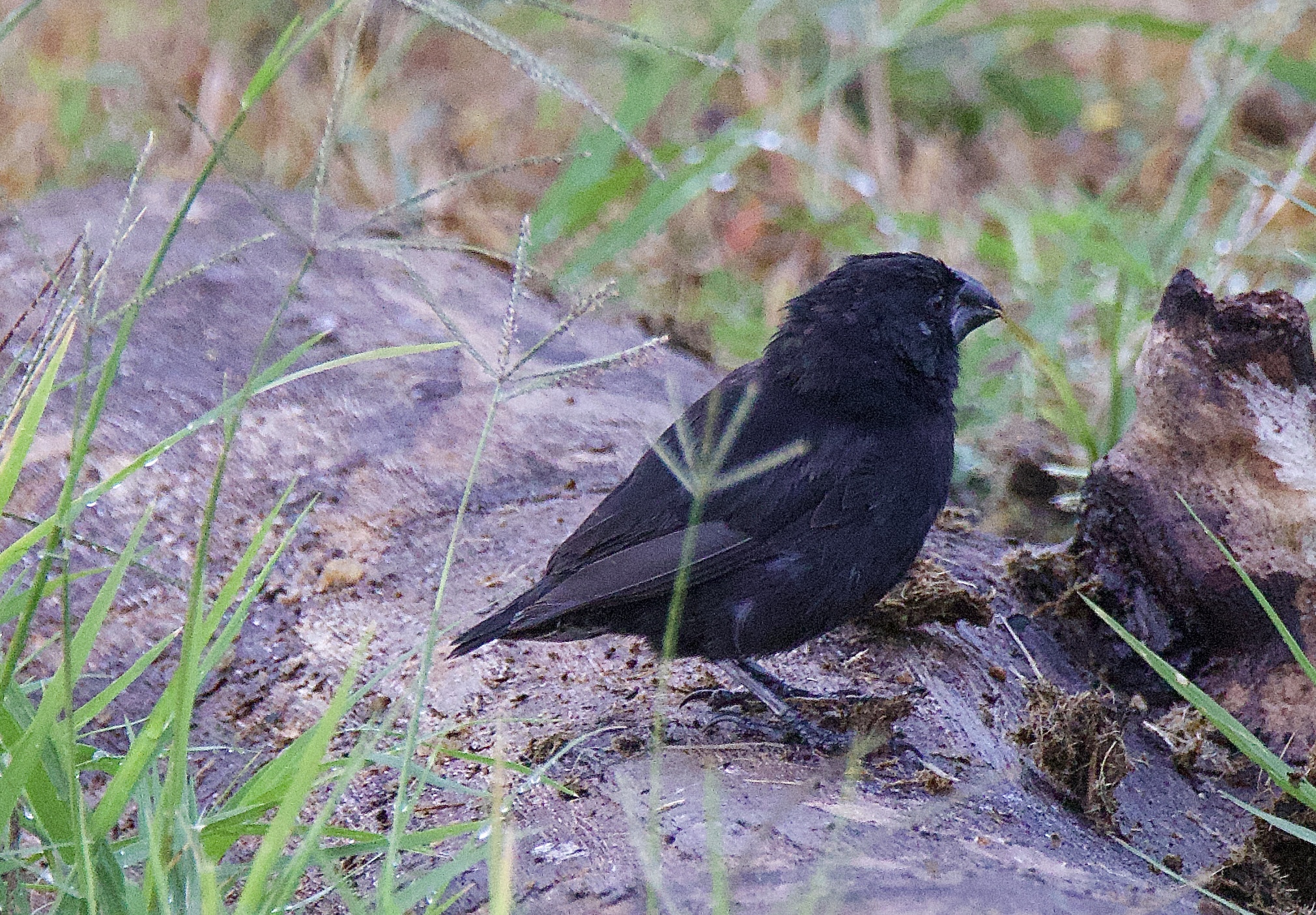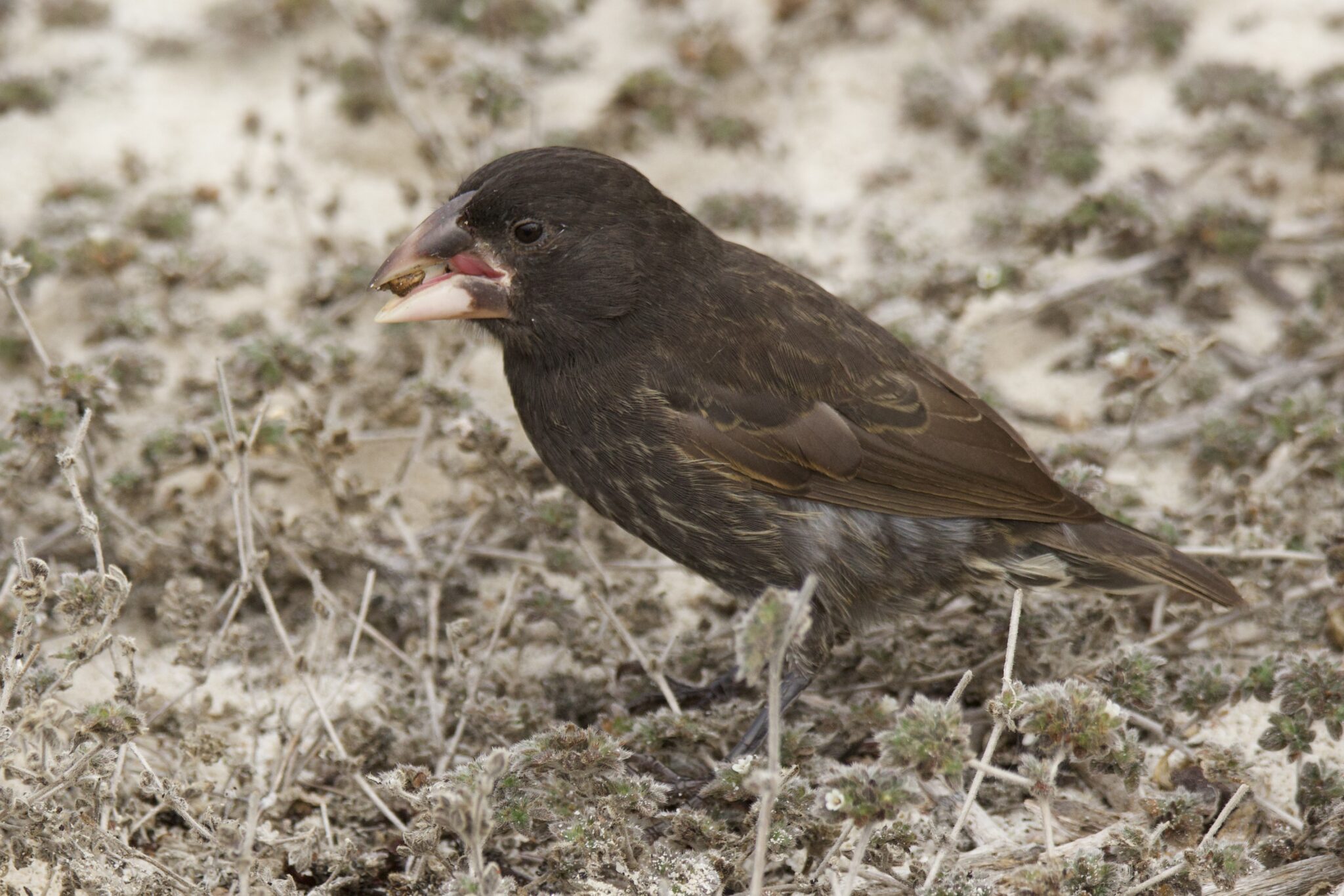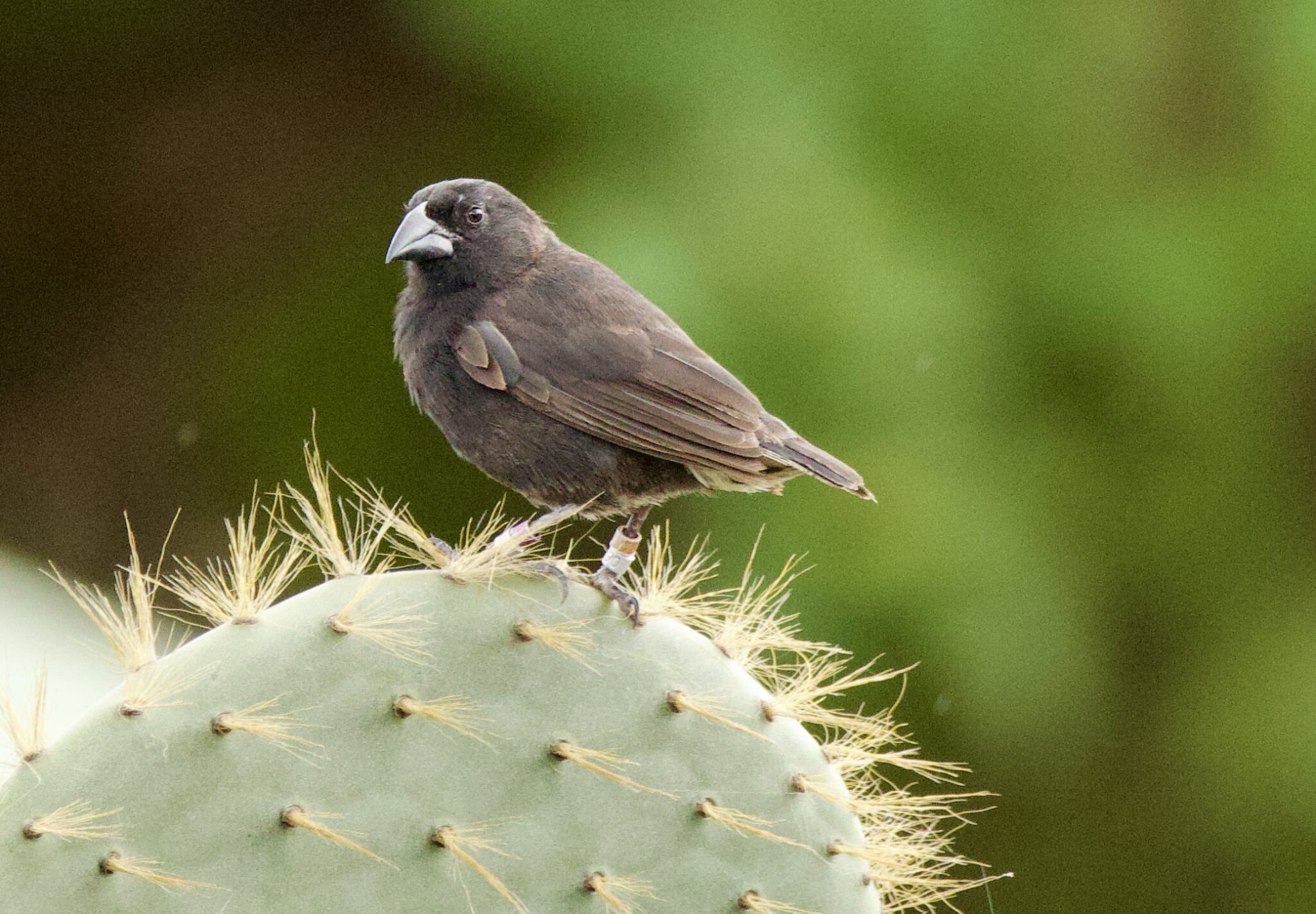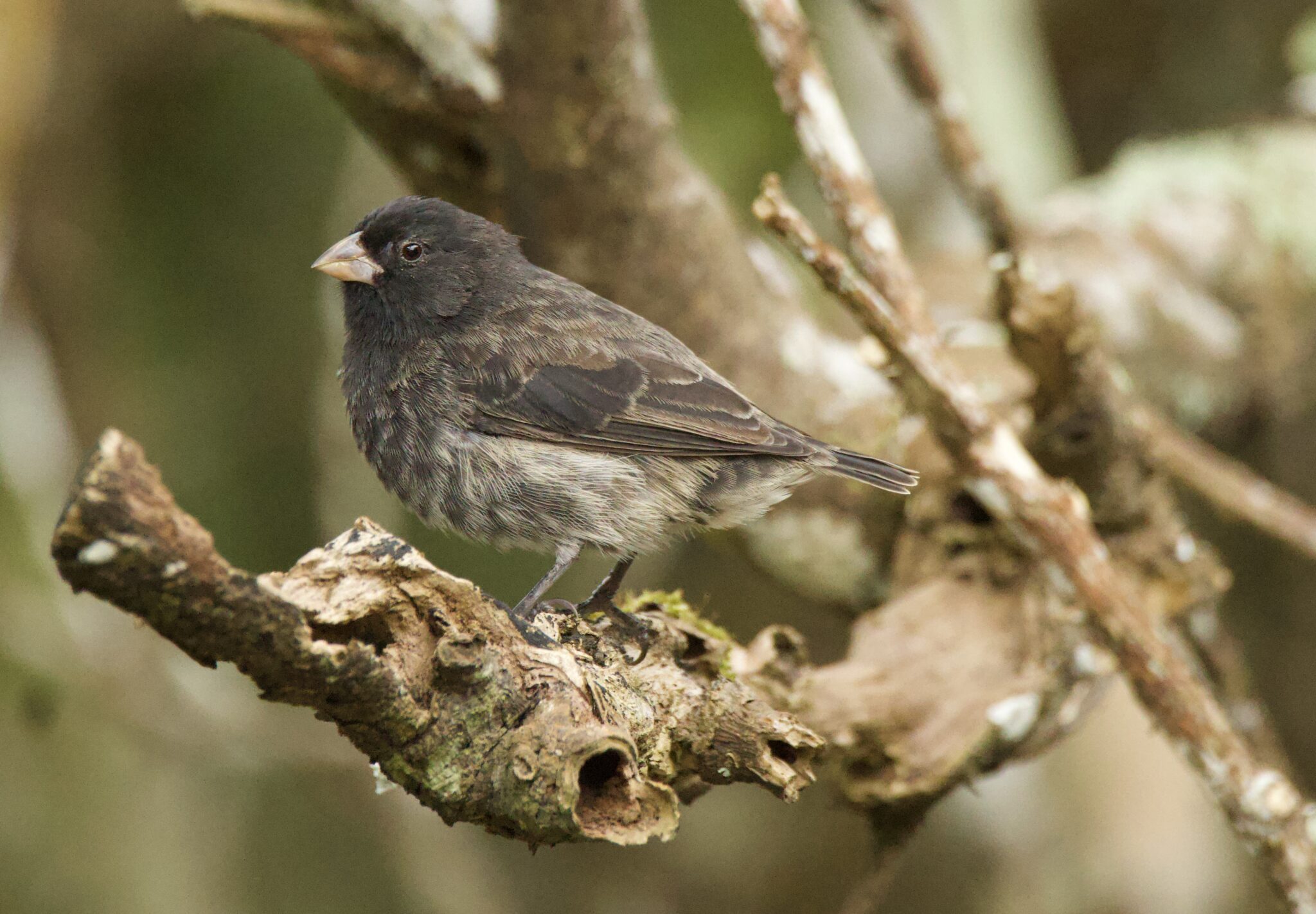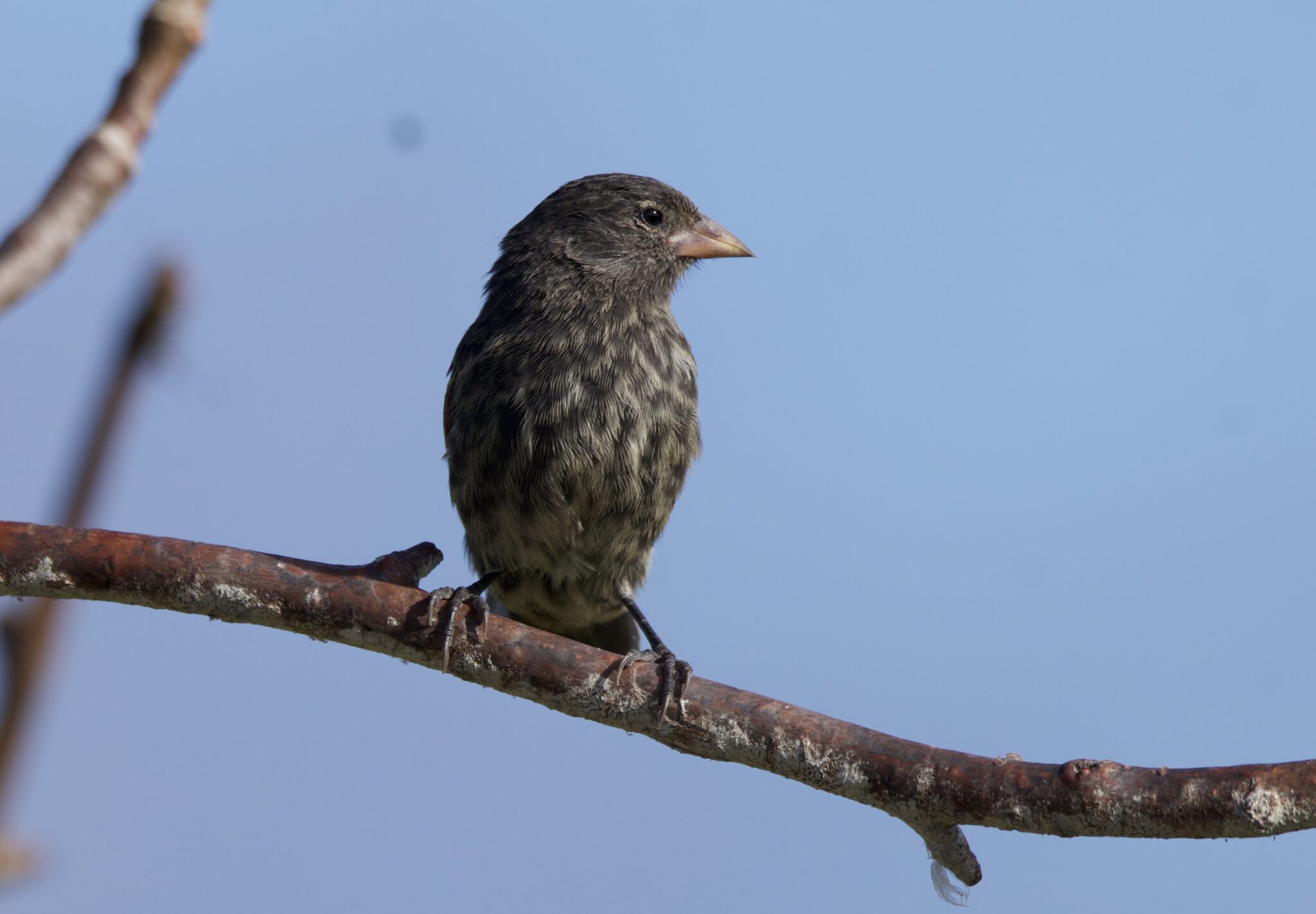As most of you recall, Charles Darwin began to formulate his theory of natural selection while visiting the Galapagos Islands. The islands were formed by a volcanic hot spot over millions of years, and the hot spot opened up in different places during that time. As a result one island would form and develop its flora and fauna, then much later another island would form and develop its own flora and fauna. These islands were formed far enough apart that the plants and animals on one could not be easily transported to another. As a result , the islands formed their own species of animals which were different from those forming on other islands. Finches were of particular interest to Darwin because if they had started as one species, over time the food available on each island helped to determine which type of bill a finch needed to have in order to survive; the finch bills looked different on each island.
Asteinmann was recently there on a tour of the Galapagos Islands and he’s shared many wonderful pictures of the birds he saw there. Today I’ve picked out five finch pictures, each one sporting a different bill. Thanks asteinmann for sharing a variety of finches for us to review.
First is a Medium Ground-finch taken on San Cristobal Island. Note the big thick bill, used for cracking tough seeds.
Next is an Espanola Ground Finch, taken on Espanola Island. Again, a big beak, but not as big as the one above.
Next is a Common Cactus Finch of Floreana Island. Note the curved bill, probably adapted to reach down into the cactus for food.
Also found on Floreana Island was this Small Ground-finch. You can see the much smaller beak on this one, adapted to eat smaller seeds.
Lastly, a Genovesa Ground-finch seen on Genovesa Island. Note the small, elongated bill on this one.
The Galapagos Islands are a fascinating place to visit and I would highly recommend a visit there to anyone – if they like birds or not.
If you enjoy seeing beautiful pictures of birds from around the world and reading about them Click Here to sign up for our mailing list. Members can post their own GreatBirdPics and learn more about bird photography techniques.
